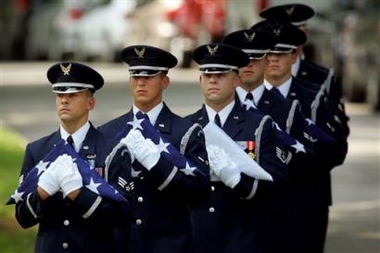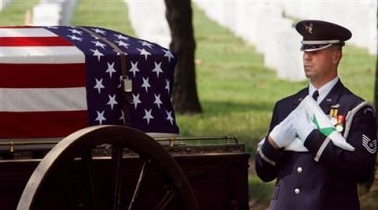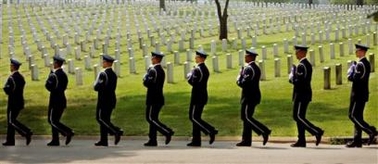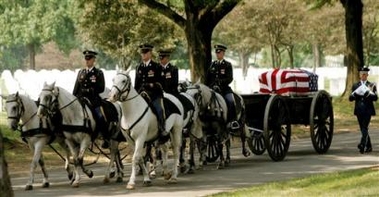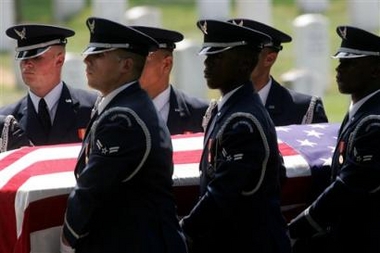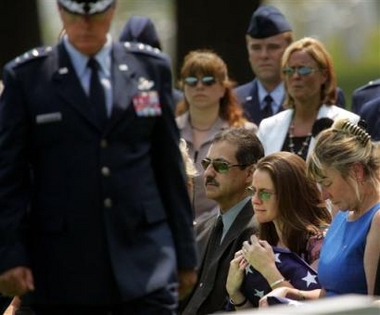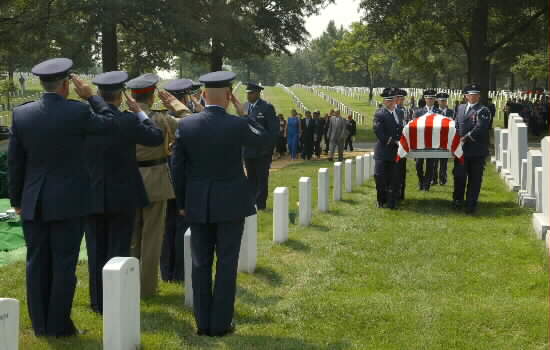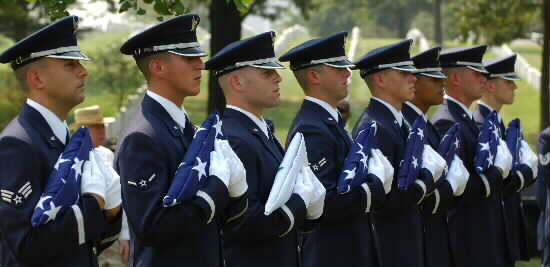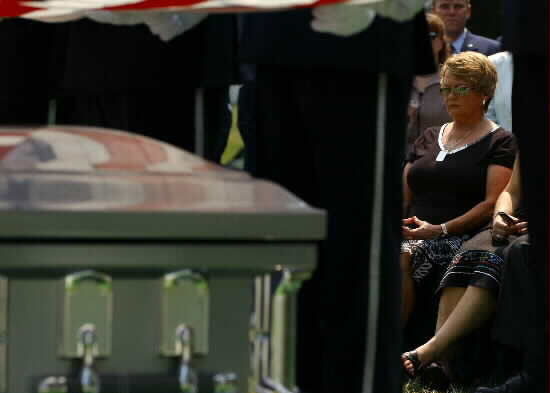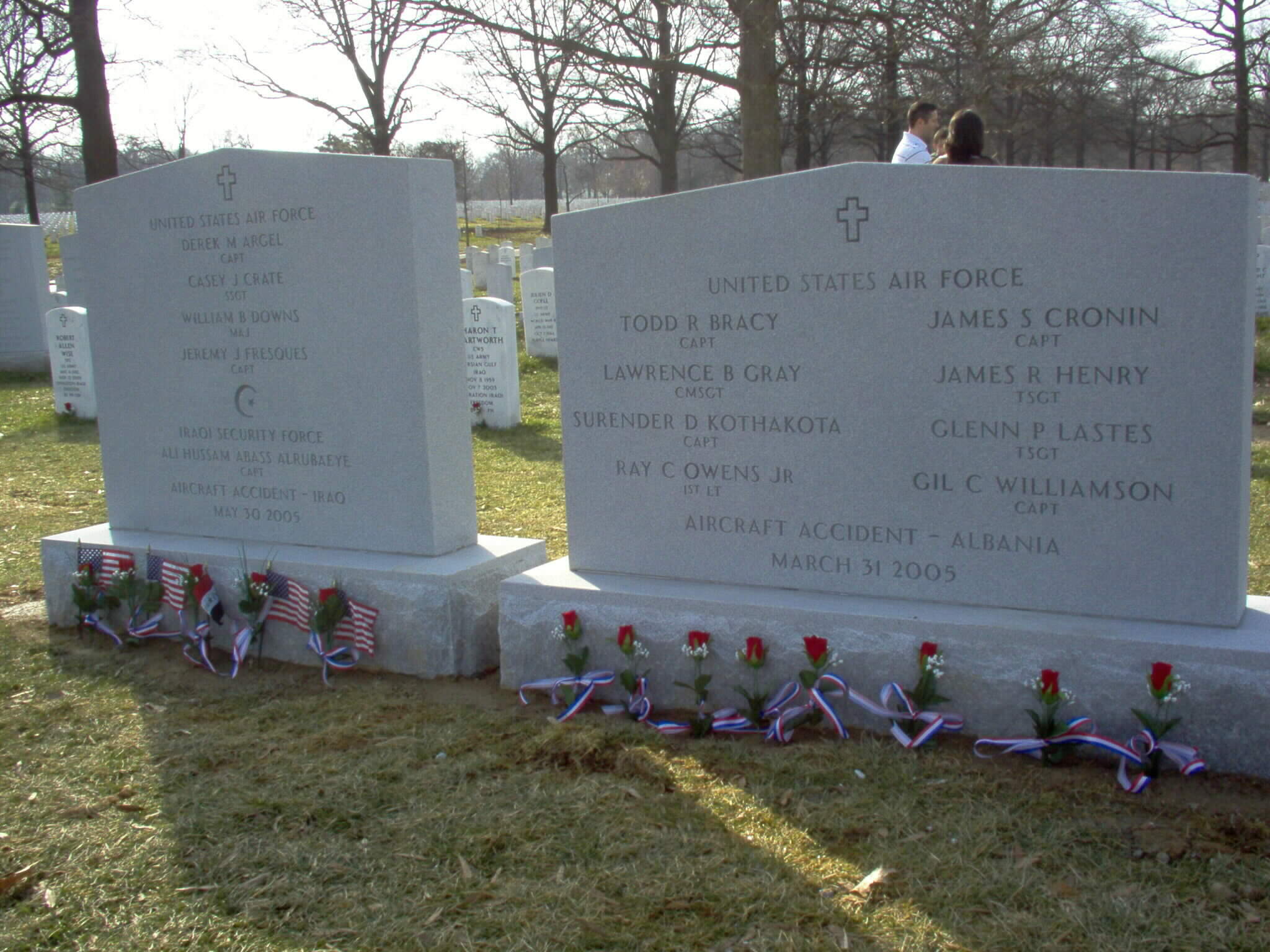NEWS RELEASE from the United States Department of Defense
No. 543-05
IMMEDIATE RELEASE
June 1, 2005
Media Contact: Air Force Public Affairs – (703) 695-0640 Public/Industry Contact: (703)428-0711
DoD Identifies Air Force Casualties
The Department of Defense announced today the deaths of four airmen who were supporting Operation Iraqi Freedom. The airmen died May 30 in the crash of an Iraqi air force aircraft during a training mission in eastern Diyala province. They are:
Major William Downs, 40, of Winchester, Virginia, assigned to the 6th Special Operations Squadron, Hurlburt Field, Florida.
Captain Jeremy Fresques, 26, of Clarkdale, Arizona, assigned to the 23rd Special Tactics Squadron, Hurlburt Field, Florida.
Captain Derek Argel, 28, of Lompoc, California, assigned to the 23rd Special Tactics Squadron, Hurlburt Field, Florida.
Staff Sergeant Casey Crate, 26, of Spanaway, Washington, assigned to the 23rd Special Tactics Squadron, Hurlburt Field, Florida.
The cause of the crash is currently under investigation.
For further information related to this release, please contact the Air Force Special Operations Command Public Affairs Office at (850) 884-5515.
CLICK HERE FOR PHOTOS OF THE FUNERAL SERVICES:
Iraqi pilot buried at Arlington cemetery
Airman buried with four Americans is first Iraqi interred
Saturday, August 13, 2005
An Iraqi pilot and four U.S. airmen were together aboard an Iraqi Air Force plane when it crashed in May. Their remains were buried together this week in Arlington National Cemetery.
Iraqi Air Force Captain Ali Hussam Abass Alrubaeye, 34, was the first Iraqi ever buried at the United States’ premiere military cemetery.
“This will signify that these warriors were training together, they went into battle together, they died together and it’s only proper that they be buried together,” Lieutenant General Michael Wooley, commander of the Air Force’s Special Operations Command, said before the service.
A silver casket covered with an American flag contained Abass’ remains as well as those of Major William Downs, 40, of Winchester, Virginia; Captain Jeremy Fresques, 26, of Clarkdale, Arizona; Captain Derek Argel, 28, of Lompoc, California, and Staff Sergeant Casey Crate, 26, of Spanaway, Washington.
Even after resorting to DNA tests, officials were unable to identify some remains of the five men killed May 30. 2005, when their single-engine plane crashed in eastern Diyala province. Separate funerals with remains that could be identified were held earlier by each of the airmen’s families. The four had been assigned to Hurlburt Field, Florida.
The unidentified remains were buried with full military honors, including the presentation of Iraqi flags to Abass’ parents and widow by Iraqi Air Force Commander Major General Kamal Abdul-Sattar Barzanjy. The 30-minute service included a procession by an Air Force band ahead of a caisson carrying the casket, a flyover and a 21-gun salute.
“It’s the right thing to do,” Tom Sherlock, the cemetery’s historian, said of the group burial. “This person was shoulder-to-shoulder with American airmen.”
The crash is still under investigation but is not believed to have been the result of hostile fire, Wooley said. The six-seat Iraqi Air Force Comp Air 7 SL aircraft had been on a mission to survey potential emergency landing sites in the region.
U.S. Air Force Lieutenant Colonel Alton Phillips, who served with Abass in Iraq this spring, said the captain would have wanted his death to be part of efforts to bring about positive change in Iraq.
“He was very dedicated about doing this mission, about getting the Iraqi Air Force, rebuilding it and making it viable,” Phillips said in a telephone interview from Kirkuk, Iraq. “If anyone deserves such an honor, it is certainly Captain Abass.”
Phillips said Abass was a quick thinker and displayed it when the two were forced to land on a dirt road 25 miles from Kirkuk after an engine failure. Fearing what might happen as the two men saw vehicles approaching the aircraft from both directions, Abass told Phillips to hide behind a nearby sand berm so he could deal with locals and allay any concerns.
“That he had the presence of mind to think of this and the courage to be willing to protect me, I thought that was absolutely incredible,” Phillips said.
There have been eight group burials at Arlington involving 19 foreigners, according to Sherlock. There are 43 individual foreigners also buried there, he said.
In 2002 the unidentified remains of three Americans and seven South Vietnamese soldiers were buried following the discovery in 1990 of a helicopter crash site in Laos where the crew went down in 1968.
Thursday’s burial brought the total number of people involved in Operation Iraqi Freedom buried at Arlington to 184.
A U.S. soldier was killed Saturday by a roadside bomb in west Baghdad, according to the U.S. military, bringing the number of U.S. troops killed in Iraq to 1,846 and the number of American troops killed in August to 47.
Web sites that estimate Iraqi military and police deaths based on government and media reports put the total at more than 2,800.
An Iraqi pilot and four U-S airmen, including one from Arizona, were buried together today at Arlington National Cemetery.
Captain Jeremy Fresques (FREHS’-kes) of Clarkdale and the others were killed May 30th when their Iraqi Air Force plane crashed.
Their remains were buried together in a silver casket.
The commander of the Air Force’s Special Operations Command says it was only proper that the five be buried together given that they had trained and gone into battle together.
The Iraqi Air Force captain is the first Iraqi ever buried at the United States’ premiere military cemetery.
Even after resorting to D-N-A tests, officials were unable to identify some remains.
The four U-S airmen had been assigned to Hurlburt Field, Florida.
For the first time, an Iraqi national has been buried at Arlington National Cemetery outside Washington.
The man was a pilot who died in May with four U-S airmen aboard an Iraqi Air Force plane that crashed in eastern Iraq. The men’s remains were buried together today in a silver casket with full military honors.
As Arlington cemetery’s historian put it, “It’s the right thing to do.” The Iraqi pilot was “shoulder-to-shoulder with American airmen.”
The crash is still under investigation but is not believed to have been the result of hostile fire.
10 August 2005:
Captain Derek Argel to be buried at Arlington
Air Force Capt. Derek Argel, 28, a Lompoc native who was the town’s first resident killed in the Iraq war, will be honored in burial services along with three other American servicemen and their Iraqi pilot at 11 a.m. Thursday, August 11, 2005, at Arlington National Cemetery.
The five men were killed in a plane crash May 30, 2005, northeast of Baghdad while on a mission to find and survey remote landing sites. The cause of the crash remains unknown.
Argel, an outstanding Cabrillo High School water polo player, and the other airmen were awarded the Bronze Star posthumously for his service in Iraq. Argel also was has earned the Air Force Achievement Medal, National Defense Service Medal and the Global War on Terrorism Medal.
His mother, Debbie Argel Bastian, and his stepfather, grandmother and brother still live in Lompoc.
Argel also left behind a wife, Wendy, and a baby son, Logan, of Fort Walton Beach, Florida, near Hurlburt Field, in the Florida panhandle, where he was stationed with the 23rd Special Tactics Squadron.
This will be the second ceremony to honor the downed flight crew. Argel and his comrades were honored in a June 2 ceremony in Florida. A memorial service on June 9, 2005, was attended by friends and family from across the country and as far away as Italy.
The identifiable remains of Argel and the four members of his flight crew, Major William “Brian” Downs, 40, Captain Jeremy Freques, 26, Staff Sergeant Casey Crate, 26, and Iraqi Air Force pilot Captain Ali Hussam Abass Alrubaeye, ave already been returned to their respective families. The Air Force is holding the group burial because some of the remains could not be identified. All five names will be on the grave marker.
Posted on Friday 4 November 2005
Report: Enemy didn’t cause crash
Plane wreck that killed four airmen under investigation
HURLBURT FIELD, FLORIDA – Hostile fire did not cause the crash of a small Iraqi Air Force plane that killed four airmen from the Panhandle base of Hurlburt Field, a joint investigation with the U.S. Air Force has confirmed.
The Iraqi pilot of the 7SL, made by Aerocomp Inc., of Merritt Island, also died in the May 30 crash on a mission to locate remote landing sites near Jalulah, about 80 miles northeast of Baghdad.
Investigators found no evidence the plane was shot down nor any sign of mechanical problems. However, they declined to offer an opinion on the cause, citing lack of legal protection from use in potential court action, officials of the Air Force Special Operations Command said Wednesday.
Winds were calm, visibility unrestricted and the temperature hot when the plane went down trying to land on a road or while making a low observation pass about an hour after taking off from Kirkuk Regional Air Base. The plane was 510 pounds heavier than its published weight limit, the report notes.
“Terrain and trees obscured the actual impact site from eyewitnesses, but they reported seeing a large fireball,” investigators wrote.
They concluded the crew was killed instantly when the plane crashed nose-first and upside down at or near full power. It had scraped its nose landing gear on the ground before crashing, the report stated.
Investigators attached descriptions of visual illusions pilots can encounter while landing, what happens when an aircraft is flying too slowly and stalls, and pilot-induced oscillations that can occur after a bounced landing. None of those scenarios, though, was designated as the cause.
The Americans killed were Major William “Brian” Downs, 40, of Winchester, Virginia; Captains Jeremy Fresques, 26, of Clarkdale, Arizona, and Derek Argel, 28, of Lompoc, California; and Staff Sergeant Casey Crate, 26, of Spanaway, Washington.
Their remains were buried at Arlington National Cemetery with those of Iraqi Air Force Captain Ali Hussam Abass Alrubaeye, 34. He was the first Iraqi buried in Arlington.
Lieutenant Colonel Tim Finnegan, a crash board member, said it was unclear if Downs or Abass was flying the plane. Both men were qualified but Downs had little experience in light aircraft, the report stated.
Trusted as one of their own
U.S. officers praise leadership, skills of 1st Iraqi service member buried at Arlington
By Aamer Madhani
Courtesy of the Chicago Tribune
Published December 2, 2005
BAGHDAD — Iraqi air force Captain Ali Hussam Abass started his military career fighting the Americans. But by the time he died in a plane crash while on a mission with four members of the U.S. Air Force, his American comrades regarded him as a hero.
As a young enlistee at the start of the Persian Gulf war in 1991, he fired anti-aircraft rounds at American jets streaking toward Baghdad.
When he died at 34, U.S. troops trusted Abbas as one of their own–a respect won by saving the life of an American officer weeks before his own death and reflected in his hero’s burial at Arlington National Cemetery in August.
At a time when the new Iraqi military and its leaders are under increasing scrutiny as a vital part of President Bush’s plan to defeat a persistent insurgency, the story of Abass is unusual. He won the admiration of American trainers not only for his technical skill as a pilot but also his abilities as a leader–something that many U.S. officers say is rare in the new Iraqi officer corps.
“Captain Ali was regarded as a strong leader by both the Americans and Iraqis,” said Lieutenant Colonel Colleen Annes, a U.S. Air Force physician who got to know Abass while she was stationed at Kirkuk Regional Air Base earlier this year. “He was also a wonderful and sweet person. If I had a son, I would want him to be like Ali.”
When Abass and his four American comrades were killed in the crash about 30 miles from the Iranian border on May 30, 2005, their deaths weren’t big news–a blip in the vicious cycle of death and mayhem that comes out of Iraq nearly each day.
Since the start of the war, more than 2,100 U.S. service members have been killed in Iraq–a solemn body count exceeded by the more than 3,600 Iraqi military service members and police officers who have been killed over the past two years, according to the Iraqi Coalition Casualty Count, a Web site that tallies the war dead.
While the fallen U.S. troops often are memorialized with heroes’ funerals and obituaries, there is rarely individual acknowledgement of the Iraqi military dead on Iraq’s news channels and in its newspapers.
The four Americans who died with Abass–Major William “Brian” Downs, Captain Jeremy Fresques, Captain Derek Argel and Staff Sergeant Casey Crate–were posthumously awarded the Bronze Star. Their commingled remains, including those of Abass, were interred in a crypt at Arlington National Cemetery. Abass became the first Iraqi service member buried at the cemetery and one of 63 foreigners interred there.
The Americans and Abass had been flying a 7SL Aerocomp light utility aircraft, one in the fleet donated by the United Arab Emirates to the Iraqi government so it could restart its air force. At the time of the crash, they were on a mission to scout areas in northeastern Iraq that could be used for emergency landings.
Their deaths are still a mystery, though officials say foul play is not suspected. Earlier this month, the U.S. Air Force also ruled out hostile fire, and officials have not found signs of mechanical problems. Nor is it clear who was flying the plane, according to U.S. officials, though Abass and Downs were qualified to do so.
When U.S. officials disbanded the old Iraqi military in 2003, Abass held the rank of Major. He worked for a time with American contractors, but when he learned early this year that the air force was being re-formed, he jumped at the chance to return, even though he was told he would have to start at a lower rank, according to his family and American military officials who worked with him in Kirkuk.
“The [American contractor] people loved him,” said his father, retired Brigadier General Hussam Abass Ali. “They told him, `How much will the air force pay? We’ll pay you double.’ But Ali was a pilot, and flying was what he loved to do.”
Lieutenant Dan Rhamy, a U.S. Navy pilot who for the early part of the year served as a liaison to the reconstituted Iraqi air force, said Abass quickly established himself as the most skilled pilot in the new air force’s first group of officers and was the first Iraqi promoted to aircraft commander in the 3rd Surveillance and Reconnaissance Squadron.
“He was somebody who was thinking two steps ahead,” Rhamy said. “He would be reminding me of things that we needed to get done before I gave thought to it.”
That foresight helped save the life of a U.S. Air Force Special Operations officer about three weeks before Abass died, according to the American officer.
In a phone interview from his home base in Florida, Lieutenant Colonel Alton Phillips recalled flying with Abass on May 10 when one of the engines in their light aircraft malfunctioned. Together they were able to safely land the aircraft on a dirt road that connected a series of farms.
As they were getting out of the aircraft, Phillips said they could see men from around the area were making their way to the plane. Phillips said that Abass quickly assessed the situation and urged him to hide behind a berm about 30 feet from the aircraft.
Abass told Phillips that on his own he was confident that he could keep the crowd at bay, but he feared how the men would respond to the sight of an American pilot.
While Phillips was hidden and quietly calling for help on a handheld radio, Abass was chatting with the crowd of men–mostly farmers whom he told that he was surveying their land when he had an engine malfunction.
It was the first time Phillips had flown with Abass, but the American officer said he became quickly impressed with Abass’ cool demeanor.
More than an hour after they made their emergency landing and with a U.S. Army response team nearby, Abass deftly persuaded the crowd of onlookers, which grew to as many as 150 men, to clear the area, according to Phillips. Abass’ father said that his son told him after the incident that he feared the crowd would have killed Phillips on the spot, or worse, captured him and passed him on to insurgents.
According to Phillips, Abass told the men that he knew they were friendly but that he worried that the Americans who were coming to recover the plane would see a large crowd as something to fear. He urged the men to get out of the area. Most took his advice.
After they were rescued, Phillips said he told Abass that he owed him a debt he knew he would never be able to repay. He said Abass was humble and assured him that he had done nothing special.
“He just reminded me that we are a team and we are friends, and that we are working together to make Iraq a better place,” Phillips said. “He said he did what anyone else would have done in this situation. He wasn’t grandiose at all.”
Annes, the U.S. Air Force physician, said she met Abass after he made a trip to the infirmary, a victim of the American cafeteria food on base that many of the Iraqis found too rich for their systems.
They soon struck up a friendship. He brought her small gifts from his home leaves and he would speak to her about his family and his life in Baghdad and tutor her in Arabic.
The last time they spoke was shortly before Annes left Iraq in May. They passed by a destroyed bunker–a remnant of the Persian Gulf war that Annes had spent on a base in Saudi Arabia and Abass had spent as an enlistee.
They had passed the site together several times before, but each time Abass had refused to tell her the story of what had happened there. The last time she saw Abass he grudgingly told her that several Iraqi pilots, including some he knew, perished in the bunker during a bombing by American pilots.
Annes said that she felt guilty for making Abass tell a story that he obviously found painful to speak about and that she became teary-eyed.
“He told me not to cry, that death was not an end but just a change, that life was eternal and we would see those men once again one day,” Annes wrote in a condolence note she sent to Abass’ father in July.
Abass’ wife, Hiyam Abass Mahdi, and their 10-year-old son, Hussam, and 8-year-old daughter, Shams, have been staying at her parents’ home since her husband’s death.
Mahdi said she and the other family members have spoken to few people outside the family about the details of the crash. She said she fears that some of her neighbors would look unfavorably on her and the family if they knew Abass was flying with Americans.
Gen. Ali, Abass’ father, said that despite the family’s efforts to keep quiet about the details of his son’s death, he is certain some know about it and are looking to exact revenge on the family. He said the family has received several menacing calls.
“Most of the time, they just are silent for a long time and then hang up,” Ali said. “But many times, a man–I don’t know if it is the same man–calls and tells me, `I know your son was collaborating with the Americans.’ I worry for my family’s safety if we remain here.”
Ali said he has written e-mails and letters to several U.S. military officials he met at the Arlington funeral in August and has asked them to help move the family to the United States. Thus far, he hasn’t received any replies, but he said he is holding on to hope.
Abass’ family has left his small, cramped apartment just as it was on the day he died.
With tears spilling down her cheeks as she recently showed visitors around her son’s home, Hanaa Qasim Abass pulled one of Abass’ shirts from his shelf and showed it as if it were something remarkable.
“He liked to keep everything neat,” his mother said as she held the shirt to her nose and breathed deeply. “I can still smell Ali.”
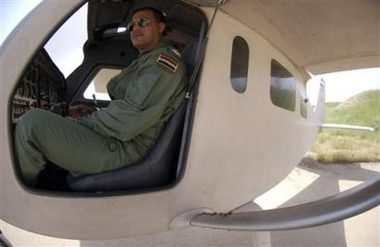
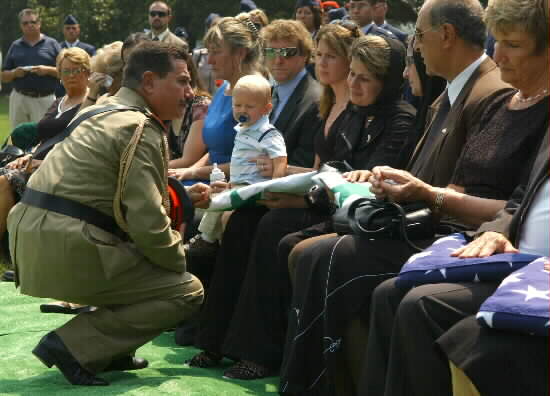
Memorial Day 2005:
America is at the park, in the water, around the grill. At a walleye fishing tournament in Dubuque, Iowa, a lawn mower race in Hillsborough, New Jersey, a techno-music festival in Detroit. Dania Jai-Alai near Miami offers free U.S. flag magnets, while supplies last.
There are countless sack races, eating contests and tugs of war, endless sales on everything from RVs to bikinis. All patriotic T-shirts are $5 at eight Sears stores in greater Phoenix, while supplies last.
This is how most of us spend Memorial Day, an occasion for remembrance that morphed, through years of peace, into beer, ball, boats and barbecue.
But three years of war have revived the holiday’s original meaning. Friday, for the families of two young Air Force officers, the gateway to summer will become a portal to grief.
In Iraq, Derek Argel and Jeremy Fresques – both Air Force Academy class of 2001, both commandos, both promoted this day to Captain – prepare to fly off on a classified mission.
In Fort Walton Beach, Florida, Captain Argel’s wife, Wendy, sits down at the computer as their 10-month-old son, Logan, plays on the floor. She wants Derek to have an e-mail from her when he gets back.
The television shows scenes of parades and cemetery services. In the e-mail’s subject field, she types, “Memorial Day.”
In nearby Destin, Florida, Captain Fresques’ wife, Lindsey, also an Air Force Captain, joins the annual “Gate to Gate” road race at Eglin Air Force Base. She and other runners drop carnations at the base Veterans Memorial as they jog past.
In Yuma, Arizona, Fresques’ father, Nick, has gotten a call from his wife, Sherry, asking him to come home early from work. After all, it’s Memorial Day. In Santa Barbara, Calif., Argel’s mother, Debbie, enjoys a poolside martini in her father-in-law’s backyard.
All are patriotic Americans who have relatives at war. Still, for them as for almost everyone else, Memorial Day is 90% recreation and 10% recollection. Before the day is over, that will change forever.
Decoration Day
More than a dozen communities claim to be the birthplace of Memorial Day, including Waterloo, New York, (designated as such by Congress in 1966); Columbus, Mississippi (recognized by the Library of Congress in 1958); and Boalsburg, Pa., where in 1864 three women started a tradition of decorating Civil War soldiers’ graves with flowers.
On May 30, 1868, Union veterans first officially observed Decoration Day. Over the next century, a succession of wars swelled the importance of what became known as Memorial Day.
In 1971, Congress divorced Memorial Day from May 30, making it the last Monday in May. By 2000, the day’s original meaning had become so subsumed in the festive three-day weekend that Congress passed the national Moment of Remembrance Act, asking for a moment of silence at 3 p.m.
Years of peace also took their toll. For many, Memorial Day was old men walking around in funny hats and outfits wearing obscure ribbons and medals – forgotten heroes of forgotten wars.
In Farmington, New Mexico, where Jeremy Fresques grew up, his mother mostly recalls the kids’ baseball games and soccer tournaments. His father sums it up: “Memorial Day was a picnic.”
In Lompoc, California, where Derek Argel grew up near Vandenberg Air Force Base, Memorial Day was different. The main street was lined with flags. Hundreds of people gathered at the cemetery. A clergyman read the names of the war dead, Scouts placed a flag on every veteran’s grave and a bugler played taps.
Derek’s grandfather was a career Marine who fought in World War II.
In the sixth grade, Derek wrote that on Memorial Day, “We should put the flag out at our homes, and go to the service at the cemetery. On this day we show respect to the veterans who risked their lives or were killed protecting our freedom and flag. I am happy to see them put a little flag on my grandfather’s grave.”
Silver bars in Iraq
In Iraq on Memorial Day 2005, Fresques, 26, and Argel, 28, have made Captain. However, there’s no time for a promotion ceremony. Because they’re on a mission, they’re not even wearing their new silver bars. A promotion “would have been the last thing on their minds,” says Colonel Kenneth Rodriquez, their group commander. “These guys were very mission-focused.”
Only a few cadets from each Air Force Academy class are selected to wear the red beret of the Air Force’s Special Tactics unit. They’re called combat controllers, a dry term for shock troops trained to land in hostile territory, set up and protect landing fields, and direct aircraft into them.
Argel: water polo star, 6-5, 210, 4% body fat. Wanted to go to the Air Force Academy so badly he attended two prep schools after high school to get in. On a whim, entered academy boxing tournament, having never boxed before, and made the finals, losing a split decision. Set so many records in commando training he had to lug a hunk of driftwood as handicap.
Fresques: hard worker, deep thinker. Considered military academies because he didn’t want to get a loan to attend University of Arizona. Joked that he chose Colorado Springs over West Point because female cadets were better looking; said the Air Force treated officers better. Found Jesus in his senior year at the academy. Upon seeing copy of Maxim, the men’s magazine, on the desk of a superior officer, he said, “Sir, you aren’t going to read that, are you?” Disqualified by eyesight for flight school, he became a communications officer. Applied for elite special ops unit after deciding that he’d “go crazy sitting at a desk.”
Argel, a rising star in Special Tactics, has decided to make a career of it. Fresques plans to leave the Air Force in 2006 and possibly go into real estate. Both will finish their tour in a month and go home.
“I’m definitely ready,” Fresques e-mails his parents on May 26. Three days later he writes in his journal that he’s not afraid of dying, only “the process of dying.” He says his fondest desire is to be “raptured with Lindsey” into heaven to be with Jesus.
On Memorial Day, the two captains board the surveillance plane to scout potential emergency landing sites. Winds are calm, visibility unrestricted.
News from the war
In the early afternoon, a holiday rooted in wars past is transformed by news from war today:
Four U.S. airmen and an Iraqi Air Force pilot were killed when their light plane crashed and exploded into flames 80 miles northeast of Baghdad. The plane went down about an hour after takeoff from Kirkuk. The cause of the crash was under investigation.
Wendy Argel is on an errand when she gets a call from her mother at home with little Logan. There are soldiers there to see her.
Wendy’s father was an Air Force pilot. She knows what that means.
While she was writing that e-mail, her husband was dead.
A few miles away, Lindsey Fresques is bustling around her town house getting ready for a barbecue when there’s a knock on the door. Four soldiers are standing there.
One is a major who attended her wedding, and the look on his face says this will be the worst day of her life. The carnation she’d dropped at the memorial had been for her own husband.
The young widows spread the sad news. Wendy reaches her mother-in-law in Santa Barbara. Debbie sinks to her knees. Her husband thinks she’s having a stroke.
Lindsey calls Sherry Fresques, who again calls Nick at work. “Jeremy won’t be coming back,” she explains.
In Iraq, where an investigation will later rule out hostile fire and mechanical failure, only a few personal items are recovered from the wreckage. They include a silver cross Jeremy had bought in Jerusalem and wore around his neck, and Derek’s gold wedding ring.
Some of the human remains are burned too badly for identification. Later, these intermingled ashes will be buried at Arlington National Cemetery. The pilot will become the first Iraqi interred there.
Four days after the crash, a ceremony is held in a hangar at Hurlburt Field in Florida, where the four airmen were based. Each is awarded the Bronze Star. Each soldier is represented by combat boots, a rifle, a helmet and, of course, a red beret.
‘People who make sacrifices’
This year, for the friends and relatives of Jeremy and Derek, Memorial Day will be no picnic.
Nick Fresques: “It always meant something to me, but it wasn’t a real important day. I didn’t know anyone real close that even served in a war. Now that my son … Now it’s completely different. Until something like this happens, unfortunately, it’s hard to realize the true meaning of Memorial Day.”
Sherry Fresques: “It’s a new experience for me, picking out what to put on your son’s grave. I’ve selected two white roses, symbolizing purity, as well as a spray of red, white and blue stars that kind of reminds me of fireworks – Jeremy loved fireworks. And I’ll probably put up this little flagpole. The flag’s one of those sparkly ones.”
Wendy Argel: “Memorial Day is a big deal down here, but I know in some other places it’s not. But we’re living in wartime. I hope people remember that. It’s not just numbers. One of those numbers happens to be my husband.”
Lindsey Fresques: “It reminds you that there really are people who make sacrifices. Jeremy and I used to think, ‘You go in and do your time, and then you get out.’ So what happened makes the meaning and honor of military service a lot more real.”
Debbie Argel Bastian: “Memorial Day will always be difficult for me now, but it will also have so much more honor attached to it.”
Dealing with the pain
For tough guys, Derek and Jeremy were never very aggressive around women.
Wendy basically picked up Derek, making eyes at him in a bar on St. Patrick’s Day. Lindsey and Jeremy met when she was his superior officer and instructor in air traffic training school. Taking a cue from Top Gun, she passed him a note inviting him to dinner.
Now there’s an overwhelming sense of what might have been. Derek was away for about half of his two-year marriage. Jeremy was overseas on his only wedding anniversary. Wendy wears Derek’s ring around her neck. Lindsey wears Jeremy’s cross around hers.
Last month, Wendy and Lindsey went sky diving, each for the first time, doing something their guys enjoyed doing.
On Memorial Day, they’ll be at Walt Disney World, where Wendy’s looking forward to the roller coasters. “It’s the adrenaline,” she says. “You can’t help but smile.”
Disney – “the happiest place on earth,” Lindsey says, reciting Walt’s famous claim. But there’s a touch of irony in her voice, suggesting that there are days when there are no happy places on earth, and that this Memorial Day could be one of them.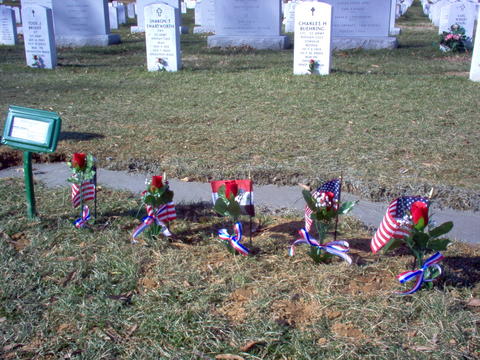
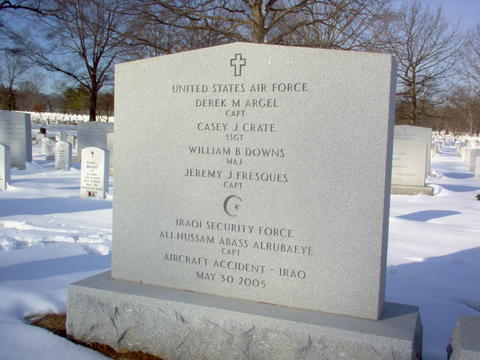
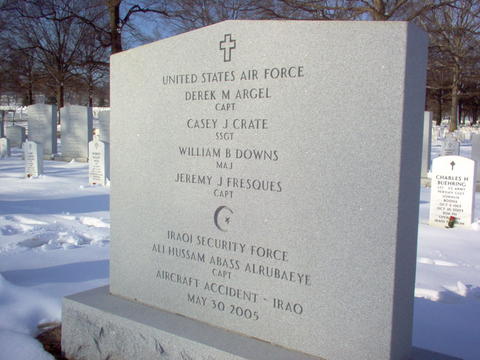
Read here our most popular Post:
Michael Robert Patterson was born in Arlington and is the son of a former officer of the US Army. So it was no wonder that sooner or later his interests drew him to American history and especially to American military history. Many of his articles can be found on renowned portals like the New York Times, Washingtonpost or Wikipedia.
Reviewed by: Michael Howard

